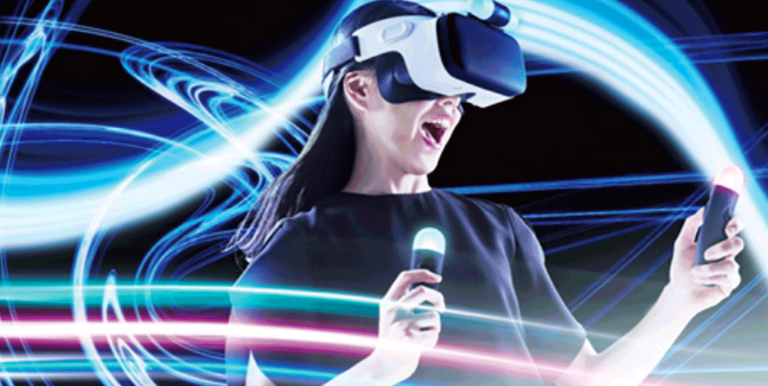VR Goggles: The New Tech Trend of 2019?
Today, most mainstream consumers have some exposure to virtual reality (VR) technology. They can now enter digital worlds by donning special VR goggles that allow them to immerse themselves in environments that parallel reality. Relatively recently, the technology has exploded onto the consumer market. VR goggles are getting more and more popular and are definitely a tech trend for 2019.
Analysts forecast that 2018 would be a year of great growth for VR technology, which it was. Looking forward, it looks like the virtual reality trend will continue, and VR goggles could be the next tech trend of 2019!
According to technology experts, virtual reality adoption was due to double in 2018. Industry insiders forecast phenomenal growth in the field. This growth, predicted the analysts, would be driven by advertising. For instance, Google carried out experiments in which virtual reality ads reacted to consumer eye movements, and Infinity and Chick-fil-A also launch their own versions of VR advertisements. This, however, isn’t the only area of expected growth for VR in 2019.
360° Videos with Virtual Reality Technology
In the virtual reality world, environments are king. As a matter of fact, 360° VR videos created higher consumer engagement in 2017 compared to traditional video media. Accordingly, more developers are creating detail-rich digital environments that offer 360° views. Many industries leverage the VR technology, and their content is improving each year.
Vendors Are Encouraging Careers in VR
With this new technology, comes the need for trained professionals who can develop new content and applications for its use. As a result, mega-corporations, such as Google, are working with content vendors to increase the virtual reality media development pool. This makes sense, as the industry can only grow if there are enough trained developers to help the field to expand.
Technology experts predict that the only thing that can slow growth in this innovative field is a lack of skilled VR developers. As a result, more industry leading enterprises are earmarking funds to help virtual reality content developers bring their products to market. As advertisers find more creative uses for VR, they’ll pour more financing into promoting the field. Perhaps virtual reality developers will improve VR goggles and develop more technology like it.
Using Virtual Reality to Help America’s Veterans
Care providers are using advanced virtual reality technology to treat former soldiers. Using VR goggles, specialists help veterans overcome posttraumatic stress disorder (PTSD) and other conditions.
In 2014, veterans were diagnosed with PTSD 15-percent more than civilians. To treat these former soldiers, therapists are using Virtual Reality Graded Exposure Therapy (VRGET). The treatment repeatedly exposes afflicted veterans to threats to induce their fear response and reduce the severity of their symptoms.
The Virtual Reality Field Is Still Growing
While most mainstream consumers have heard of VR, or even tried on a pair of virtual reality goggles, many have yet to purchase a personal virtual reality system. Still, nearly half of consumers polled in a recent survey report that they’ve tried VR goggles. Approximately 60-percent of consumers believe that the technology has potential benefits, but the same group believes that the technology is underdeveloped.
For one, many consumers feel that VR goggles create a feeling of isolation and that the current VR headsets need a lot more work. Despite these misgivings, many prefer the concept of virtual reality as opposed to augmented reality (AR). Yet, the percentage of consumers who own VR headsets didn’t increase much compared to 2017.
As engineers improve VR, immersive environments are growing increasingly realistic. Developers, for example, have created 360° microphones to complement fully immersive environments. The technology simulates the experience of hearing in all directions, just like in real life. Advertisers hope that this technology will increase the impact of their media.
Virtual reality engineers are also attempting to create technology that provides sensory stimulation for touch and smell. One day, it may be impossible to distinguish VR from real life.
VR Technology and VR Goggles Are Becoming More Popular
Among those who have yet to take the VR plunge, more than 70-percent feel that the equipment is too expensive, especially the nearly 30-percent of respondents who believe that the technology needs vast improvement. Other reasons that consumers cited for not adopting the technology was that it’s difficult to set up and the inability of VR to work well with prescription glasses. In response to these trends, both HTC and Oculus Rift have dropped their price by roughly $200 to make the product more accessible and enticing.
As the world’s computer systems continue to grow smarter, VR technology is positioned to become a disruptive innovation for consumers and businesses. With improvements in virtual reality software and hardware, the technology will grow increasingly mainstream.
For now, VR goggles are expensive compared to other consumer goods. However, experts expect the cost of VR software and equipment to drop more in the near future. When this happens, VR goggles will be more assessable to a wider audience, and eventually, the technology will become more popular as it becomes more affordable.

